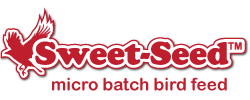What Do Hummingbirds Eat Other Than Nectar?

Hummingbirds are well known for their fondness for nectar, whether it is the natural nectar produced by flowers, specially formulated commercial solutions and concentrates or simple homemade sugar water. Nectar alone, however, does not provide hummingbirds with full and complete nutrition, as it lacks protein, amino acids and many trace vitamins and minerals that hummingbirds need to stay healthy. So what else do hummingbirds eat, and how can you offer those foods to your hungry hummers?
Insects, Insects, Insects
A single hummingbird will eat dozens of small insects a day, or even more if it has a hungry brood of hatchlings to feed. Insects are an essential protein source, and the birds also derive fats, salts, vitamins and minerals from their buggy prey. Though different hummingbirds may have different preferences for which insects they eat, their most popular prey includes small gnats, spiders and aphids, as well as larger wasps, larvae and even insect eggs. Hummingbirds will pluck insects from plants and flowers, pull them out of sticky sap, nab them from cobwebs and even catch them in midair.
To feed hummingbirds insects... Avoid using insecticides or other killing chemicals, especially around flowerbeds or hummingbird feeders. Leave cobwebs intact for hunting hummingbirds, and consider adding a small dish of mashed banana, ripe oranges or watermelon chunks near hummingbird feeders to attract delicious insects.
Sap to Sip
Hummingbirds readily sip at exposed tree sap, especially when floral blooms and other nectar sources may be scarce. While not quite the same composition as flower nectar, tree sap still contains sufficient sucrose and amino acids that hummingbirds need, making it an adequate source of nutrition. The birds may also feast on small insects that are drawn to the sap at the same time they are sipping at a sweet, sticky drop.
To feed hummingbirds sap… Plant sap-rich trees, such as sugar maples, and take steps to attract woodpeckers that will drill holes hummingbirds can visit. Sapsuckers are especially adept at creating the types of holes that hummingbirds can easily feed from.
Protein in Pollen
Some hummingbirds have been noted as having pollen in their stomachs and digestive tracts, and while pollen is not a rich source of nutrition, it does contain some protein and minerals that can be useful to hummingbirds. It is likely that hummingbirds pick up pollen as they sip nectar from flowers, rather than eating it directly, but it is still part of their diet. At the same time that they are getting some pollen, hummingbirds are also effective pollinators in the garden and landscape, which will ensure even more flowers they can visit at a later time.
To feed hummingbirds pollen… Have plenty of blooming flowers available, particularly nectar-rich varieties that will entice hummingbirds to their sweet liquid. While the birds will not visit the flowers specifically for pollen, they will likely consume some pollen as they sip nectar.
Ashes, Sand and Grit
Some hummingbirds have been seen nibbling at piles of ash, sand and other fine grit. It is unclear if the birds were actually ingesting the material, but if they were, they would be getting small traces of salts, calcium and other minerals. The birds could also have been picking small insects out of the material for protein and fat. Either way, this material can add a valuable component to a hummingbird's diet.
To feed hummingbirds ashes, sand and grit… Create a small, convenient pile of very fine grit, ash and powdery sand in a place accessible to hummingbirds, such as in a small dish on a pedestal near hummingbird feeders. Sprinkling the material in a hummingbird flowerbed can also be an effective way to be sure the birds can reach it if they are interested.
Fruit Juice
Hummingbirds definitely have a sweet tooth (even though they don't have teeth!) and they have been seen sipping at juice from fresh fruit, such as berries, prickly pears, apples and other fruits. Fruits that have exposed flesh, such as from a break or having already been pecked at by other birds, are easiest for hummingbirds to sip from. This juice has great sugar content for excellent energy, and the birds may also be picking at tiny insects attracted to the juice.
To feed hummingbirds fruit juice… Add fruit trees and berry bushes to your landscaping, and leave fruit on the plants throughout the season so birds can access it. You can also create a fruit juice feeder by placing chunks or slices of fresh, juicy fruit into dishes for hummingbirds to visit. Do not, however, offer any canned or bottled fruit juices, as these products have many dyes, preservatives and other additives that are not healthy for hummingbirds.
The more options you have for hummingbirds to eat, the more of these delightful flying jewels you'll attract to your yard and the more you'll enjoy seeing them nibble at all their treats.
Image by dalmoarraes from Pixabay
